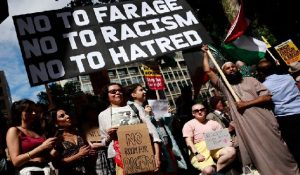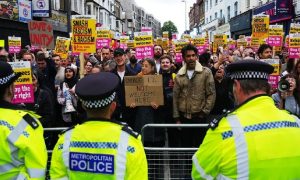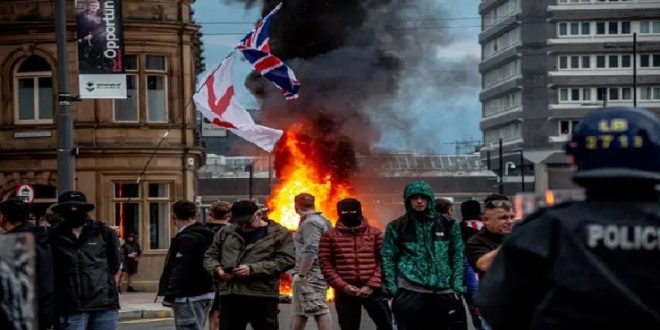21-08-2024
LONDON: The recent UK riots ignite memories of racist violence in 20th century. Immediately after a stabbing attack on young girls, rumors started circulating on social media about the background of the British born 17-year-old suspect and these false posts claimed that the suspects name was Ali Al Shakti an asylum seeker and a Muslim immigrant.
 Racist riots that erupted across the United Kingdom in the first half of August were ostensibly aimed at Muslims, immigrants and the police but for many Black Britons, it also reignited memories of racist violence by the far-right during the second half of the 20th century.
Racist riots that erupted across the United Kingdom in the first half of August were ostensibly aimed at Muslims, immigrants and the police but for many Black Britons, it also reignited memories of racist violence by the far-right during the second half of the 20th century.
“Are we in 2024 or 1974? I mean, what?”
That’s Ngozi Fulani, the CEO and founder of Sistah Space, an African and Caribbean heritage charity in East London.
The organization boarded up its windows as supporters warned them that far-right rioters were headed that way.
“I think it’s important that people understand that there is trauma and re-trauma there’s historical trauma and current trauma. What the conversation seems to be happening in most households is how much this has thrown us back to those days when we saw our parents, our elders, going through this. This, for those of us who are old enough to remember the 60s and the 70s and all that kind of stuff, this is carbon copy.”
The riots were fueled by misinformation spread online that the suspect in a deadly knife attack was an Islamist migrant.
Three little girls, Elsie Dot Stancombe, Alice da Silva Aguiar and Bebe King, were killed during that incident.
As well as white rioters attacking hotels housing asylum seekers, immigration centers, mosques, police officers and shops…
Videos also circulated online of white men attacking people of color across the country that includes a group badly beating a Black man in Manchester.
Kaushik Mistry is the founder of the Anthony Walker Foundation, a charity combating racism and hate crime.
 “Suddenly you’re a prisoner in your own home, in your own country, in the place where you live and work and contribute to that society. You know, and it’s incredibly unhealthy that the result of the last week’s actions have caused that for people.”
“Suddenly you’re a prisoner in your own home, in your own country, in the place where you live and work and contribute to that society. You know, and it’s incredibly unhealthy that the result of the last week’s actions have caused that for people.”
Mistry said the foundation would normally have up to 50 referrals a week but in the first two weeks of August, more than 300 people affected by race and religious hate approached his charity.
The violence was ostensibly aimed against Muslims, immigrants and the police after misinformation about a deadly knife attack on young girls spread online. But it morphed into a much wider threat that has left the Black community shaken.
The targets were mainly immigration lawyers’ offices and immigration centres, but the violence was broader.
White rioters attacked hotels housing asylum seekers, mosques and police officers as well as smashing and looting shops on the pretext of false online information that the suspected killer of three young girls was an Islamist migrant.
Videos also circulated of white men attacking people of color across the country including one wielding a hedge trimmer running towards a Muslim couple in a petrol station and a group badly beating a Black man in Manchester.
For Black Britons, the riots reignited memories of racist violence by the far-right during the second half of the 20th century and sparked discussions still ongoing over how to keep each other safe. (Int’l Monitoring Desk)
 Pressmediaofindia
Pressmediaofindia




